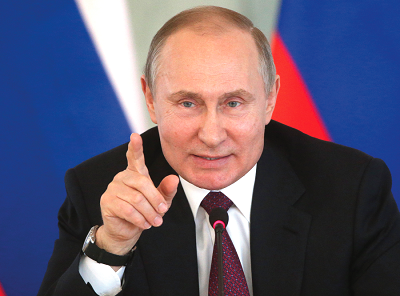
Intermediate Nuclear Force treaty-To pull out or not?
The intermediate Nuclear Force (INF) Treaty is an agreement between the United States of America (USA) and the Union of Soviet Socialist Republics (USSR).
The treaty was signed by President Ronald Reagan of the USA and President Mikhail Gorbachev of the USSR, on December 8, 1987, in Washington.
Advertisement
The 150-page arms reduction agreement abolishes medium and short-range nuclear missiles.
First of its kind, the INF treaty enables the two countries to scrap and destroy some 2,800 missiles with 3,800 warheads.
provides for the scrapping and destruction of all American and Soviet long-range and short-range INF missiles, including the American Pershing-2 and ground-launched cruise missiles and the Soviet SS-20, SS-4, SS-12 and SS-23.
The treaty has unlimited duration and gives each party the right to pull out – “if it decides that extraordinary events related to the subject matter of the treaty have jeopardised its supreme interests’’.
After signing the treaty at the White House in Washington, President Reagan said: “We made this impossible vision a reality.’’
He said although there were some differences between the two countries, “We see what can be accomplished when we pull together”.
President Gorbachev said the treaty was the beginning of a new era for mankind.
“We can be proud of planting this sapling which, one day, may grow into a mighty tree of peace,” he said.
He noted: “May December 8, 1987, become a date that will mark the watershed separating demilitarisation of human life.”
The optimism and expectations of the signatories of the INF treaty were very high then and for about three decades.
Nearly 2,700 missiles were, by 1991, scrapped and destroyed and both the USA and Russia, that inherited the assets of the collapsed USSR, were permitted, under the treaty, to inspect each other’s military installations.
Hopes were high until the unexpected began to happen. The treaty was presented with its first major test when President of the Russian Federation, Mr Vladimir Putin, declared, in 2007, that the treaty no longer served Russia’s interests – because other countries had developed missiles that fell within the same banned range.
That threatening statement was also in reaction to the American withdrawal from the Anti-Ballistic Missile Treaty in 2002.
That treaty banned weapons designed to intercept ballistic nuclear missiles.
In 2014, the Americans accused Russia of developing and testing ground-launched cruise missiles within the banned range of 500 and 5,500 kilometres (310 and 3,400 miles).
The then US President, Mr Barack Obama, decided not to pull his country out of the INF treaty on that account saying: “Such a move could restart an arms race”.
Early in 2017, a US White House source claimed that Russia had developed and deployed banned cruise missiles.
Last week, President Donald Trump of the US announced that his country would withdraw from the INF treaty.
He said Russia had violated the 1987 treaty, and added that the US would not allow Russia ‘’to go and do weapons… we’re not allowed to. They’ve violated it for many years’’.
The US cited the new medium-range missile – Novator 9M729 - as an example. That missile is known



